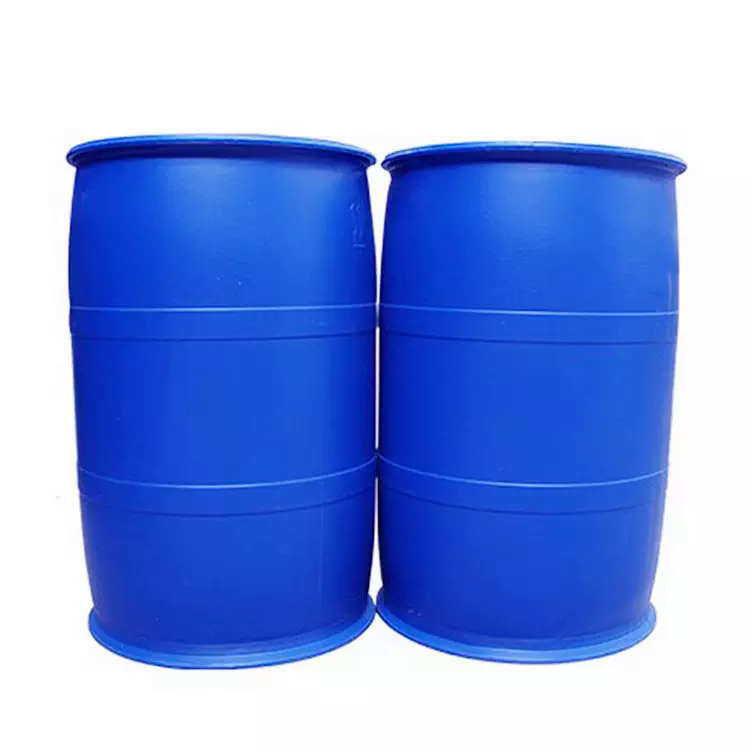Palmitoyl chloride
Synonym(s):Hexadecanoyl chloride;Palmitoyl chloride
- CAS NO.:112-67-4
- Empirical Formula: C16H31ClO
- Molecular Weight: 274.87
- MDL number: MFCD00000742
- EINECS: 203-996-7
- SAFETY DATA SHEET (SDS)
- Update Date: 2023-08-04 21:29:34

What is Palmitoyl chloride?
Chemical properties
clear liquid
The Uses of Palmitoyl chloride
Palmitoyl Chloride was used as a polymeric carriers for plasmid DNA (pDNA) delivery to 293T cells.
The Uses of Palmitoyl chloride
Palmitoyl chloride is a compound which has been used as a polymeric carrier for plasmid DNA delivery to 293T cells.
What are the applications of Application
Palmitoyl chloride is a compound which has been used as a polymeric carrier for plasmid DNA delivery to 293T cells
Synthesis Reference(s)
The Journal of Organic Chemistry, 54, p. 6101, 1989 DOI: 10.1021/jo00287a023
General Description
A clear colorless to light yellow liquid with a pungent odor. Freezing point 11-12°C. Irritates skin, eyes, and mucous membranes. May be toxic by ingestion, inhalation and skin absorption.
Air & Water Reactions
Decomposes rather slowly in water to form hydrochloric acid and palmitic acid, a fatty acid that is not soluble in water.
Reactivity Profile
HEXADECANOYL CHLORIDE is incompatible with bases (including amines), with strong oxidizing agents, and with alcohols. May react vigorously or explosively if mixed with diisopropyl ether or other ethers in the presence of trace amounts of metal salts [J. Haz. Mat., 1981, 4, 291].
Health Hazard
TOXIC; inhalation, ingestion or skin contact with material may cause severe injury or death. Contact with molten substance may cause severe burns to skin and eyes. Avoid any skin contact. Effects of contact or inhalation may be delayed. Fire may produce irritating, corrosive and/or toxic gases. Runoff from fire control or dilution water may be corrosive and/or toxic and cause pollution.
Fire Hazard
Non-combustible, substance itself does not burn but may decompose upon heating to produce corrosive and/or toxic fumes. Some are oxidizers and may ignite combustibles (wood, paper, oil, clothing, etc.). Contact with metals may evolve flammable hydrogen gas. Containers may explode when heated.
Flammability and Explosibility
Not classified
Properties of Palmitoyl chloride
| Melting point: | 11-13 °C (lit.) |
| Boiling point: | 88-90 °C/0.2 mmHg (lit.) |
| Density | 0.906 g/mL at 25 °C (lit.) |
| refractive index | n |
| Flash point: | >230 °F |
| storage temp. | Store below +30°C. |
| solubility | Chloroform (Sparingly), Ethyl Acetate (Slightly) |
| form | Liquid |
| color | Clear |
| Specific Gravity | 0.905 |
| Water Solubility | Decomposition |
| Sensitive | Moisture Sensitive |
| BRN | 972409 |
| Stability: | Moisture Sensitive |
| CAS DataBase Reference | 112-67-4(CAS DataBase Reference) |
| NIST Chemistry Reference | Palmitoyl chloride(112-67-4) |
| EPA Substance Registry System | Hexadecanoyl chloride (112-67-4) |
Safety information for Palmitoyl chloride
| Signal word | Danger |
| Pictogram(s) |
 Corrosion Corrosives GHS05 |
| GHS Hazard Statements |
H314:Skin corrosion/irritation |
| Precautionary Statement Codes |
P280:Wear protective gloves/protective clothing/eye protection/face protection. P363:Wash contaminated clothing before reuse. P301+P330+P331:IF SWALLOWED: Rinse mouth. Do NOT induce vomiting. P303+P361+P353:IF ON SKIN (or hair): Remove/Take off Immediately all contaminated clothing. Rinse SKIN with water/shower. P305+P351+P338:IF IN EYES: Rinse cautiously with water for several minutes. Remove contact lenses, if present and easy to do. Continuerinsing. |
Computed Descriptors for Palmitoyl chloride
Abamectin manufacturer
Merix Laboratories Pvt Ltd
New Products
4-AMINO-TETRAHYDRO-PYRAN-4-CARBOXYLIC ACID HCL 4-(Dimethylamino)tetrahydro-2H-pyran-4-carbonitrile 4-Aminotetrahydropyran-4-carbonitrile Hydrochloride (R)-3-Aminobutanenitrile Hydrochloride 3-((Dimethylamino)methyl)-5-methylhexan-2-one oxalate 1,4-Dioxa-8-azaspiro[4.5]decane 5-Bromo-2-nitropyridine Nimesulide BP Aceclofenac IP/BP/EP Diclofenac Sodium IP/BP/EP/USP Mefenamic Acid IP/BP/EP/USP Ornidazole IP Diclofenac Potassium THOMAIND PAPER PH 2.0 TO 4.5 1 BOX BUFFER CAPSULE PH 9.2 - 10 CAP SODIUM CHLORIDE 0.1N CVS ALLOXAN MONOHYDRATE 98% PLATINUM 0.5% ON 3 MM ALUMINA PELLETS (TYPE 73) LITHIUM AAS SOLUTION 2-Bromo-1-(bromomethyl)-3-chloro-5-nitrobenzene 2-Bromo-3-nitroaniline N-(3-Hydroxypropyl)-N-methylacetamide 3-Bromo-6-chloropyridazine 4-ethyl-3-nitrobenzoic acidRelated products of tetrahydrofuran








You may like
-
 112-67-4 98%View Details
112-67-4 98%View Details
112-67-4 -
 Palmitoyl chloride 98%View Details
Palmitoyl chloride 98%View Details
112-67-4 -
 Undecanoic Acid CAS 112-67-4View Details
Undecanoic Acid CAS 112-67-4View Details
112-67-4 -
 Palmitoyl chloride 98% CAS 112-67-4View Details
Palmitoyl chloride 98% CAS 112-67-4View Details
112-67-4 -
 Palmitoyl chloride CAS 112-67-4View Details
Palmitoyl chloride CAS 112-67-4View Details
112-67-4 -
 Palmitoyl Chloride CAS 112-67-4View Details
Palmitoyl Chloride CAS 112-67-4View Details
112-67-4 -
 Palmitoyl chloride CAS 112-67-4View Details
Palmitoyl chloride CAS 112-67-4View Details
112-67-4 -
 Palmitoyl chloride CAS 112-67-4View Details
Palmitoyl chloride CAS 112-67-4View Details
112-67-4